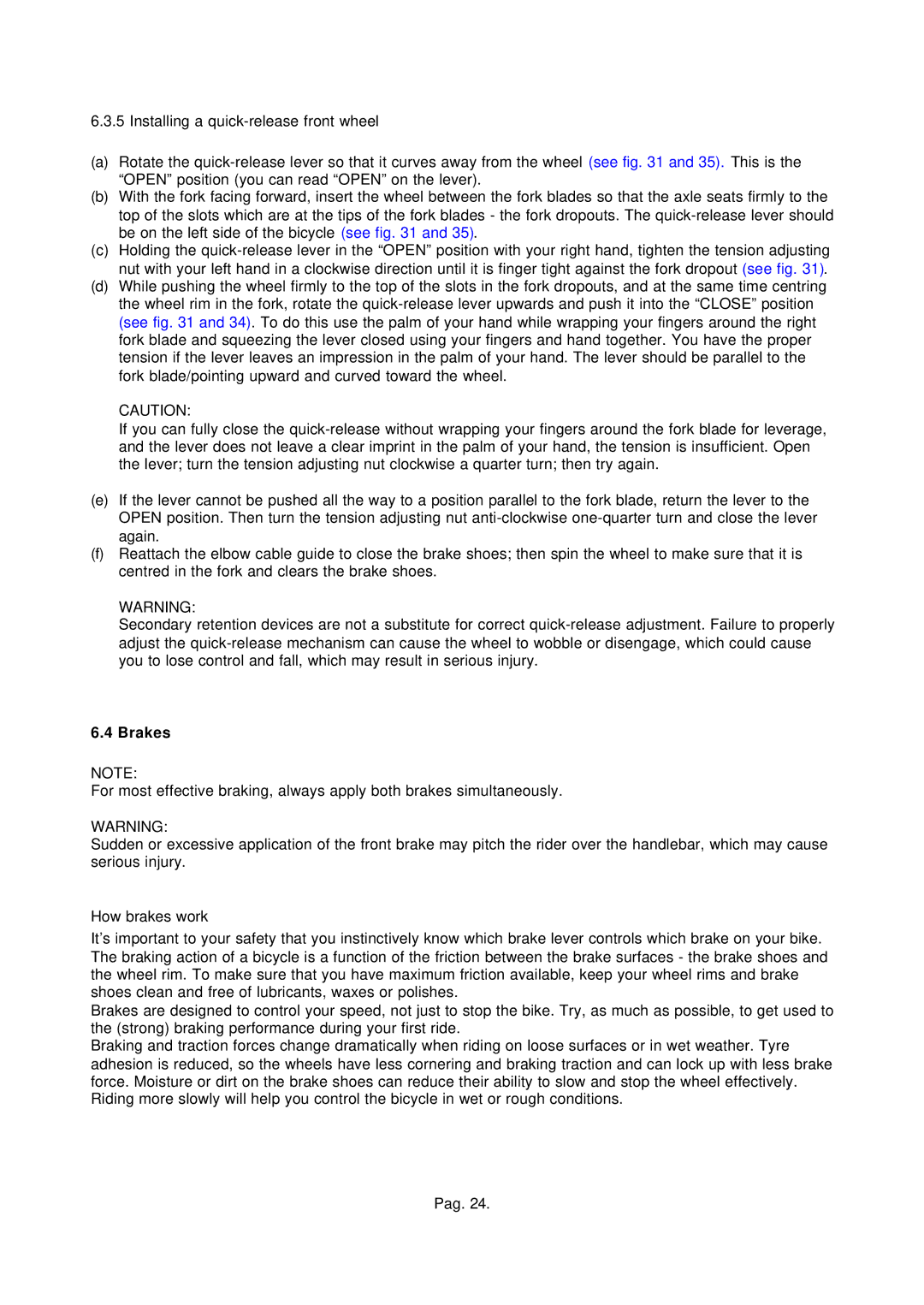6.3.5 Installing a
(a)Rotate the
(b)With the fork facing forward, insert the wheel between the fork blades so that the axle seats firmly to the top of the slots which are at the tips of the fork blades - the fork dropouts. The
(c)Holding the
(d)While pushing the wheel firmly to the top of the slots in the fork dropouts, and at the same time centring the wheel rim in the fork, rotate the
CAUTION:
If you can fully close the
(e)If the lever cannot be pushed all the way to a position parallel to the fork blade, return the lever to the OPEN position. Then turn the tension adjusting nut
(f)Reattach the elbow cable guide to close the brake shoes; then spin the wheel to make sure that it is centred in the fork and clears the brake shoes.
WARNING:
Secondary retention devices are not a substitute for correct
6.4 Brakes
NOTE:
For most effective braking, always apply both brakes simultaneously.
WARNING:
Sudden or excessive application of the front brake may pitch the rider over the handlebar, which may cause serious injury.
How brakes work
It’s important to your safety that you instinctively know which brake lever controls which brake on your bike. The braking action of a bicycle is a function of the friction between the brake surfaces - the brake shoes and the wheel rim. To make sure that you have maximum friction available, keep your wheel rims and brake shoes clean and free of lubricants, waxes or polishes.
Brakes are designed to control your speed, not just to stop the bike. Try, as much as possible, to get used to the (strong) braking performance during your first ride.
Braking and traction forces change dramatically when riding on loose surfaces or in wet weather. Tyre adhesion is reduced, so the wheels have less cornering and braking traction and can lock up with less brake force. Moisture or dirt on the brake shoes can reduce their ability to slow and stop the wheel effectively. Riding more slowly will help you control the bicycle in wet or rough conditions.
Pag. 24.
